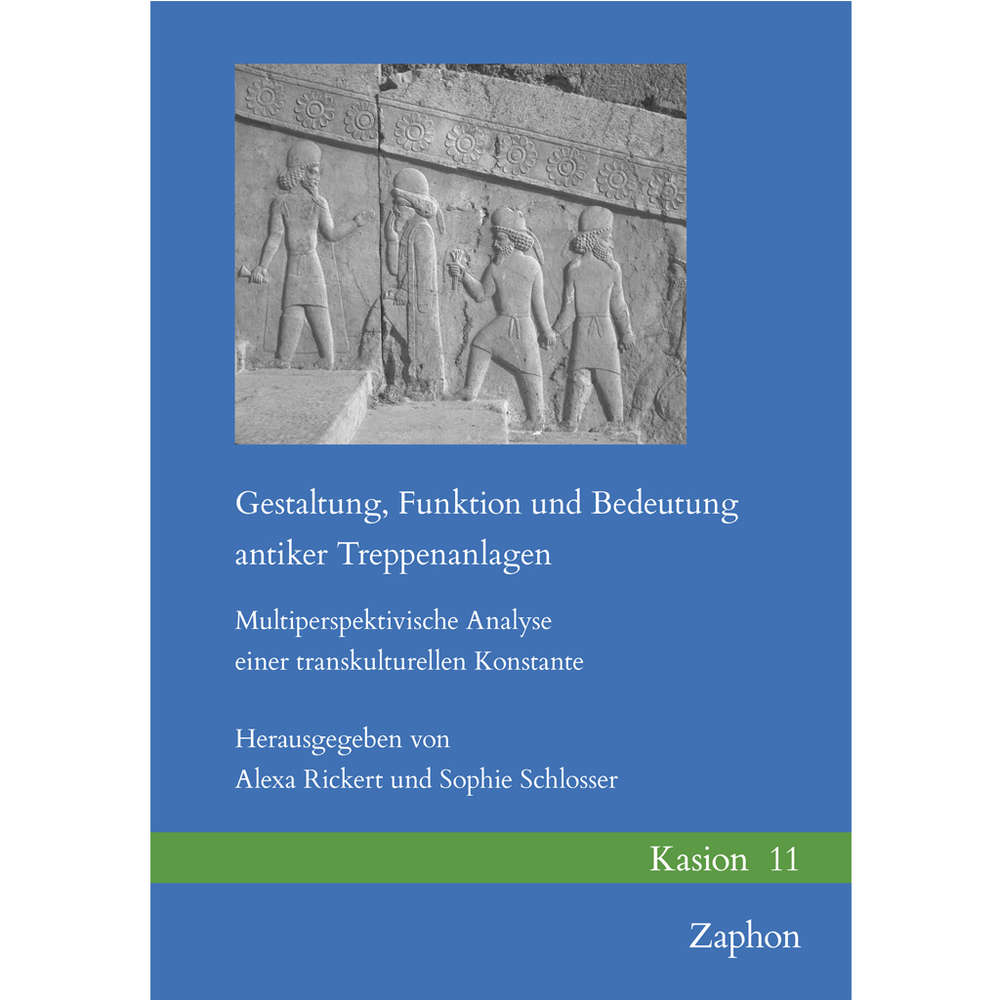Herausgegeben von Alexa Rickert und Sophie Schlosser
Kasion 11
2022
ISBN 978-3-96327-214-1 (book)
ISBN 978-3-96327-215-8 (e-book, via ProQuest, Ebsco, ISD)
486 pp. / 17 x 24 cm / hardcover, thread stitching
As part of a symposium, the approach to a culture-immanent perspective on ancient architecture was tested using the case study of "staircases". Following an introduction to the concept and research branch of Scalalogy, the volume that emerged from the symposium brings together 18 contributions to staircases in the Ancient Near East, Ancient Egypt, the Greek and Roman worlds and late antiquity. Since its earliest proven use in prehistoric times, the staircase has never lost its architectural and social importance, despite the increased use of technical aids. It is an architectural element that people all over the world depend on every day and which is also understood to this day as a symbol and carrier of meaning. Correspondingly, stairs have an enormous expressiveness with regard to culturally immanent developments of architectural symbols as well as cross-cultural principles of interpretation and are therefore a research object of only apparent marginality. The studies are devoted, inter alia, to staircases and stairwells in the temples of Tell al-'Ubayd, Khafajah and Eridu, in the royal palace of Qaṭna and in the Red House in Dūr-Katlimmu in the Ancient Near East, in the Temple of Horus at Edfu and in the Temple of Hathor at Dendara in Ancient Egypt, in the Minoan palace of Phaistos, hidden stairways in ancient Greek temples and the stairways in Vitruvius’ De Architectura, and in late antique pilgrimage centers in Asia Minor.










 Stumble It!
Stumble It!

No comments:
Post a Comment